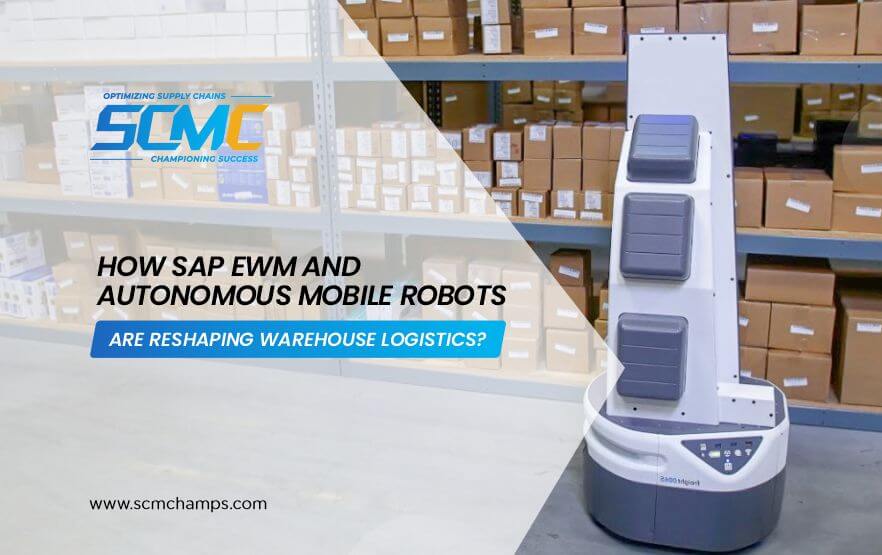
Enhancing Warehouse Efficiency with SCM Champ’s SAP Warehouse Robotics Services and AGV & AMRs
Introduction: As operational logistics continue to evolve, the automation of processes through Autonomous Mobile Robots (AMRs) is becoming increasingly prevalent. This automation not only improves efficiency but also enhances flexibility. Gone are the days when robots were seen as competitors to humans. Instead, these “autonomous colleagues” now support us in repetitive tasks and help overcome the shortage of skilled workers.
Key Points:
1. Diverse Applications of AMRs:
Unlike traditional Automated Guided Vehicles (AGVs), AMRs do not require markings or pre-planned infrastructure. They possess the ability to move independently, detect obstacles, and find optimal paths. In addition to transporting goods, AMRs can assist in picking, storage, and retrieval processes within warehouses.
2. Process Integration in SAP EWM:
To fully optimize the use of AMRs within an organization’s logistics processes, seamless integration into SAP EWM (Extended Warehouse Management) is essential. Defining the division of tasks between AMRs and SAP EWM plays a critical role in shaping efficient operations.
3. Two Approaches to Process Design:
One approach involves pre-planning complete warehouse orders within SAP EWM and handing them over to AMRs for autonomous execution. The AMRs take charge of the entire order-picking process, including avoiding traffic congestion in picking aisles. Alternatively, the order-picking process can be executed online in SAP EWM, with AMRs responsible for transporting order totes. This enables real-time adaptation to new requirements and immediate response to exceptions.
4. SAP Warehouse Robotics:
SAP Warehouse Robotics serves as SAP’s integration solution for AMRs, working collaboratively with SAP EWM. Operating on the SAP BTP (Business Technology Platform) in the Cloud, Warehouse Robotics focuses on planning and optimizing AMR operations.
5. Direct and Indirect Connections:
AMRs can be connected to SAP Warehouse Robotics either directly or indirectly through a manufacturer-specific or manufacturer-independent fleet controller. Direct connection involves individual communication between SAP Warehouse Robotics and each AMR, enabling autonomous task execution. On the other hand, a fleet manager controls a group of AMRs in scenarios where a vendor-specific or vendor-independent fleet manager is employed.
6. Integration with SAP EWM via Fleet Manager:
An alternative to integrating AMRs through Warehouse Robotics is connecting a fleet manager directly to SAP EWM, such as via SAP EWM/MFS. This architecture grants the fleet manager the responsibility for optimization and control, offering a simpler IT infrastructure.
7. Project-Specific Integration Considerations:
Integrating AMRs into an SAP EWM environment necessitates meticulous planning and a deep understanding of SAP processes and integration. Each project’s unique goals, process design, AMR selection, and technical infrastructure must be carefully considered.
8. Prototype Implementation and Gradual Rollout:
It is recommended to begin with building a prototype that incorporates simple processes as an entry point to AMR utilization. This allows for gaining valuable experience, which can then be leveraged for a gradual rollout to other processes and warehouse areas.
By leveraging SCM Champ’s SAP Warehouse Robotics services and effectively integrating AMRs into SAP EWM, organizations can significantly enhance their warehouse efficiency, optimize operations, and adapt to evolving logistics requirements.


